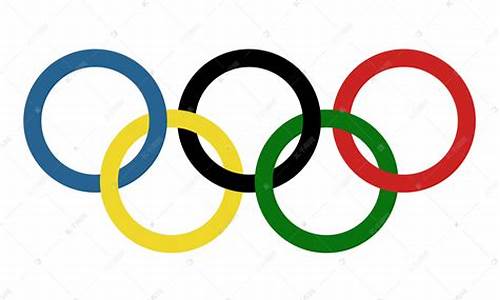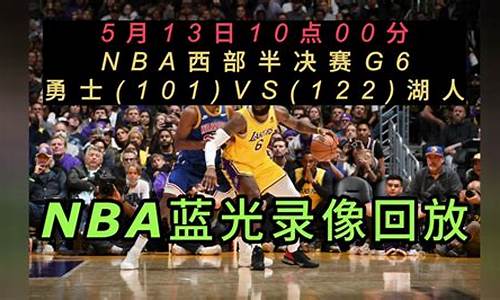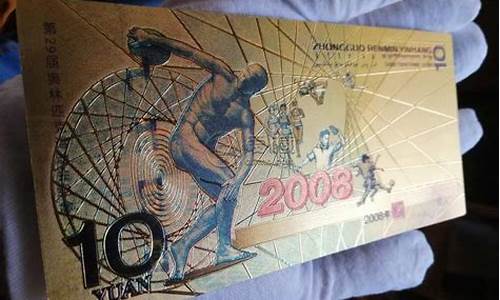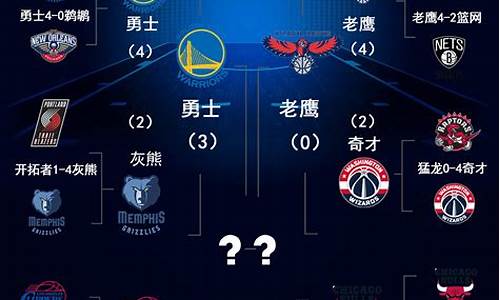您现在的位置是: 首页 > 体育新闻 体育新闻
奥运五环的意义的英语_奥运五环的意义英文
zmhk 2024-06-13 人已围观
简介奥运五环的意义的英语_奥运五环的意义英文 作为一名AI机器人,我可以提供与奥运五环的意义的英语相关的各种信息和建议,包括最新的研究成果和实践经验。1.�����廷�������Ӣ��2.奥运五环英语是什么?3.奥运五环英文怎
作为一名AI机器人,我可以提供与奥运五环的意义的英语相关的各种信息和建议,包括最新的研究成果和实践经验。
1.�����廷�������Ӣ��
2.奥运五环英语是什么?
3.奥运五环英文怎么说五环各代表什么是谁发明的
4.奥运五环颜色分别代表什么?用英语说
5.求一篇英语关于奥运五环的文章

�����廷�������Ӣ��
The emblem of the Olympic Games is composed of five interlocking rings (blue, yellow, black, green, and red respectively) on a white field. This was originally designed in 1913 by Baron Pierre de Coubertin, the founder of the modern Olympic Games. Upon its initial introduction, de Coubertin stated the following in the August, 1913 edition of Revue Olympique:
The emblem chosen to illustrate and represent the world Congress of 1914 ...: five intertwined rings in different colours - blue, yellow, black, green, red - are placed on the white field of the paper. These five rings represent the five parts of the world which now are won over to Olympism and willing to accept healthy competition.
In his article published in the "Olympic Revue" the official magazine of the International Olympic Committee in November 1992, the American historian Robert Barney explains that the idea of the interlaced rings came to Pierre de Coubertin when he was in charge of the USFSA, an association founded by the union of a two French sports associations and until 1925, responsible for representing the International Olympic Committee in France: The emblem of the union was two interlaced rings (like the vesica piscis typical interlaced marriage rings) and originally the idea of Swiss psychiatrist Carl Jung because for him the ring meant continuity and the human being.[2]
The 1914 Congress had to be suspended due to the outbreak of World War I, but the emblem (and flag) were later adopted. They would first officially debut at the VIIth Olympiad in Antwerp, Belgium in 1920.
The emblem's popularity and widespread use began during the lead-up to the 1936 Summer Olympics in Berlin. Carl Diem, president of the Organizing Committee of the 1936 Summer Olympics, wanted to hold a torchbearers' ceremony in the stadium at Delphi, site of the famous oracle, where the Pythian Games were also held. For this reason he ordered construction of a milestone with the Olympic rings carved in the sides, and that a torchbearer should carry the flame along with an escort of three others from there to Berlin. The ceremony was celebrated but the stone was never removed. Later, two British authors Lynn and Gray Poole when visiting Delphi in the late 1950s saw the stone and reported in their "History of the Ancient Games" that the Olympic rings design came from ancient Greece. This has become known as "Carl Diem's Stone".[3] This created a myth that the symbol had an ancient Greek origin. The rings would subsequently be featured prominently in Nazi images in 1936 as part of an effort to glorify the Third Reich.
The current view of the International Olympic Committee is that the emblem "reinforces the idea" that the Olympic Movement is international and welcomes all countries of the world to join.[4] As can be read in the Olympic Charter, the Olympic symbol represents the union of the five continents and the meeting of athletes from throughout the world at the Olympic Games. However, no continent is represented by any specific ring. Though colourful explanations about the symbolism of the coloured rings exist, the only connection between the rings and the continents is that the number five refers to the number of continents. In this scheme, the Americas are viewed as a single continent, and Antarctica is omitted.
五环旗的诞生
1914年6月,国际奥委会在巴黎召开第十六届全会。全会闭幕的日子——6月23日,正好是顾拜旦在巴黎索邦第一次召集奥林匹克会议建议振兴古代奥运会的20周年纪念日。在奥林匹克运动诞生20年的喜庆之际,国际奥委会主席顾拜旦男爵向与会的委员们献上了自己的杰作——国际奥委会会旗,它由洁白的底色和蓝、黄、黑、绿、红的五色圆环组成的五环旗.
后来又将5 个不同颜色的圆环解释奥运五环,也称为奥林匹克环,从左至右为天蓝、黄、黑、绿、红五色。这个标志是第一届现代奥运会上,由顾拜旦提议设计的,起初的设计理念是它能够概括会员国国旗的颜色,但以后对这五种颜色又有其他的解释。1979年国际奥委会出版的《奥林匹克评论》(第四十期)强调,五环的含义是“象征五大洲的团结,全世界的运动员以公正、坦率的比赛和友好的精神,在奥运会上相见”。 为五大洲的象征.
奥运五环的来历
说起五环的来历,曾经有过这样一个有趣的故事。 1936年第11届柏林奥运会第一次举行火炬传递活动,火炬的传递路线自奥林匹亚开始,从希腊北部出境,沿多瑙河穿过奥地利,最后进入德国。为了烘托这一具有象征意义的活动,奥运会组委会主席卡尔·迪姆及其同事几乎完全按照古奥运会的情景来布置沿途经过的古希腊遗址。火炬到达德尔菲帕那萨斯山的古代运动场时要举行一个特别仪式,这时,迪姆突发奇想,在一个高约3英尺的长方形石头的四面设计并刻上了现代奥林匹克运动的五环标志,放在了古运动场的起跑线一端。仪式结束后,火炬继续北上,而这块作为道具的石头却被留在了古运动场。
由于极少有人知道这块刻有五环标志石头(后被称做“迪姆之石”)的真实身份,此后的很长一段时间,它被当做了“有3000年历史的古代奥运会遗迹”。这个以讹传讹的错误直到20世纪60年代才被德尔菲的希腊官员指出。1972年5月,这个假文物被送到德尔菲的另一个地方——古罗马广场入口处。
事实上,现代奥林匹克运动的五环标志出自现代奥运会创始人顾拜旦之手。顾拜旦认为奥林匹克运动应该有自己的标志,这个念头在他的脑海里盘桓已久。1913年,他终于构思设计了五环标志和以白色为底印有五环的奥林匹克旗,打算在国际奥委会成立20周年之际推出这个标志。
1979 年6 月,国际奥委会正式宣布了会旗和五环的含义:根据《奥林匹克宪章》,奥林匹克旗帜和5 个圆环的含义是:象征五大洲的团结以及全世界运动员以公正、坦率的比赛和友好的精神在奥运会上相见。
奥运五环英语是什么?
奥运会会旗和奥运会圣火的含义
The OLYMPIC FLAG
现代奥运会创始人顾拜旦于1913-1914年间设计了奥运会的会旗。它由5个奥林匹克环从左至右套接而成,可以是单色,也可以是蓝、黄、黑、绿、红5种颜色。最初的解释是五种颜色代表各国国旗的颜色,后来又将5个不同颜色的圆环解释为五大洲的象征。1920年,奥林匹克旗第一次飘扬在安特卫普夏季奥运会体育场。这届奥运会后,历届奥运会开幕式上由上届举办城市转交此旗,由举办城市保存,比赛期间主运动场仅悬挂代用品。
Baron de Coubertin designed the Olympic Flag in 1913-14. It has five interlocking rings (blue, yellow, black, green and red) on a white background. The ring's colours were based on the knowledge that at least one of these colours is on every flag of each participating country. The five interlocking rings represent the union of the five continents and the meeting of the athletes of the world at the Olympic Game.
The Olympic Flag was used for the first time in the 7th Olympiad in Antwerp, Belgium in 1920. It is paraded during the opening ceremony of each Game. At the end of the Games, the Olympic Flag is presented to the next host city by the Games host city.
奥运五环英文怎么说五环各代表什么是谁发明的
奥运五环英语是:Olympic rings。奥运五环一般指奥林匹克标志,它由5个奥林匹克环从左到右互相套接组成,上方是蓝色、黑色、红色三环,下方是**、绿色二环,亦能以单色形式使用,整体造型为一个底部小的规则梯形。
奥林匹克标志象征五大洲和全世界的运动员在奥运会上相聚一堂,同时强调所有参赛运动员应以公正、坦诚的运动员精神在比赛场上相见。
奥运五环象征意义
奥林匹克标志的最初设计意图在于以五环象征世界上承认奥林匹克运动,并准备参加奥林匹克竞赛的五大洲,而第六种颜色白色——旗帜的底色,与五环的五种颜色的组合能够表示当时世界上所有国家的国旗颜色。
意指所有国家都毫无例外地能在自己的旗帜下参加比赛,这蕴含着顾拜旦吸收殖民地民族参加奥运会,为各民族间的和平事业服务的思想。(注:五环的颜色与各大洲之间不存在明确的对应关系)
随着时间的推移和奥林匹克运动的发展变化,对奥林匹克标志的阐释也随之而变。《奥林匹克宪章》指出,奥林匹克标志象征着奥林匹克运动的活动,代表着五大洲的团结,以及全世界运动员以公正、坦率的比赛和友好的精神在奥运会上相见,充分体现奥林匹克主义的内容与“所有国家、所有民族”的“奥林匹克大家庭”主题。
以上内容参考:百度百科-奥林匹克标志
奥运五环颜色分别代表什么?用英语说
奥运五环(英语:The Olympic Rings?或称五环会徽、奥林匹克运动会会徽),是五个互扣的环圈,五环的颜色自左至右为蓝、黄、黑、绿、红,也可用单色绘制,而底色为白色。奥林匹克五环於1913年由前国际奥林匹克委员会主席、现代奥林匹克运动会创始人皮埃尔·德·顾拜旦设计,因以五色能概括各会员国国旗的颜色而选定,但之後对五环赋予更多内涵。1979年,国际奥委会出版的《奥林匹克评论》中指出:五环象徵五大洲的团结,全世界的运动员以公正、坦率的比赛和友好的精神在奥运会上相见。求一篇英语关于奥运五环的文章
The colours of the interlinked Olympic rings were chosen by the International Olympic Committee (IOC) , to represent the union of the 5 continents , Australia , Africa , America , Asia and Europe and further signify the meeting of the worlds athletes at the Olympic Games.
The plain white background of the Olympic flag is symbolic of peace throughout the games .
The five colours of the rings from left to right are blue, black and red across the top with yellow and green along the bottom , these colours may be found on most flags of the world and officially hold no other particular significance , although some believe each colour represents a particular continent.
According to most accounts, the rings were adopted by Baron Pierre de Coubertin (founder of the modern Olympic Movement) in 1913 after he saw a similar design on an artifact from ancient Greece. The five rings represent the five major regions of the world: Africa, the Americas, Asia, Europe, and Oceania. Every national flag in the world includes at least one of the five colors, which are (from left to right) blue, yellow, black, green, and red. It is important to emphasize that Pierre de Coubertin never said nor wrote that the colors of the rings were linked with the different continents
The Olympic Flag made its debut at the 1920 Olympic Games in Antwerp, Belgium. At the end of each Olympic Games, the mayor of that host-city presents the flag to the mayor of the next host-city. It then rests at the town hall of the next host-city for four years until the Opening Ceremony of their Olympic Games.
1.The Olympic Games olympic flag is the management formulates in GuBaidan under. Five links be blue, black, are respectively red, yellow,the green, three links in on, two links in under, are linked together,tight association in same place. Does obeisance the day regarding thisexplanation according to the attendance, five links "in the symbolicworld acknowledged the Olympics movement, and prepares to attend theOlympic Games the five continents, but the sixth kind of color white -flag bottom color, Italy refers to all countries all without a singleexception to be able to attend the competition in under the oneselfcountry flag". Afterwards some people explained that, IOC used atfirst blue, black, is red, yellow, the green took five links thecolors were because it could represent participates in the IOC allcountries national flag at that time the color. The 7th session ofOlympic Games got up from 1920, five links five kind of colorssymbolized the five continents: The blue color represents Europe,black Italy refers to Africa, red symbolizes the Americas, the yellowsymbolizes Asia, but the green explains makes Australia. In 1973 theIOC published conference proceeding "the Olympics Forum" emphasizedthat, "The conference symbol and the meeting pennant five linksmeaning is symbolizing five continents' unity, world athlete by fair,frank competition and friendly spirit, meets at the Olympic Games."
奥运会五环旗是在顾拜旦主持下制定的。五环分别为蓝、黑、红、黄、绿色,三环在上,两环在下,环环相扣,紧紧联在一起。按照顾拜旦对此的解释,五环“象征世界上承认奥林匹克运动、并准备参加奥林匹克竞赛的五大洲,而第六种颜色白色——旗帜的底色,意指所有国家都毫无例外地能在自己国家的旗帜下参加比赛”。 后来有的人解释说,国际奥委会最初采用蓝、黑、红、黄、绿色作为五环的颜色是因为它能代表当时参加国际奥委会所有国家国旗的颜色。自1920年第7届奥运会起,五环的五种颜色象征五大洲:蓝色代表欧洲,黑色意指非洲,红色象征美洲,**标志着亚洲,而绿色喻作澳洲。 1973年国际奥委会会刊《奥林匹克论坛》则强调:“会徽和会旗的五环含义是象征着五大洲的团结,全世界的运动员以公正、坦率的比赛和友好的精神,在奥运会上相见。”
2.The flag features the emblem of the Olympic Games — five interlocking rings (blue, yellow, black, green, and red respectively) on a white field. This was originally designed in 1913 by Baron Pierre de Coubertin, the founder of the modern Olympic Games, but gained widespread popularity due to its promotion by Nazi Germany [1]. Upon its initial introduction, de Coubertin stated the following in the August, 1913 edition of Revue Olympique:
The emblem chosen to illustrate and represent the world Congress of 1914 ...: five intertwined rings in different colours - blue, yellow, black, green, red - are placed on the white field of the paper. These five rings represent the five parts of the world which now are won over to Olympism and willing to accept healthy competition.
In his article published in the "Olympic Revue" the official magazine of the International Olympic Committee in November 1992, the American historian Robert Barney explains that the idea of the interlaced rings came to Pierre of Coubertin when he was in charge of the USFSA ( Unión des Societes Fran?aise de Sports Athletiques): The emblem of the union was two interlaced rings (like the typical interlaced marriage rings) and originally the idea of Swiss psychiatrist Carl Jung because for him the ring meant continuity and the human being. [2]
“ The Olympic flag [...] has a white background, with five interlaced rings in the centre : blue, yellow, black, green and red [...] This design is symbolic ; it represents the five continents of the world, united by Olympism, while the six colours are those that appear on all the national flags of the world at the present time. ” (1931) Textes choisis II, p.470.
The 1914 Congress had to be suspended due to the outbreak of World War I, but the flag and emblem were later adopted. They would first officially debut at the VIIth Olympiad in Antwerp, Belgium in 1920.
The emblem's popularity and widespread use began during the lead-up to the 1936 Summer Olympics in Berlin. Carl Diem, president of the Organizing Committee of the 1936 Summer Olympics, wanted to hold a torchbearers' ceremony in the stadium at Delphi, site of the famous oracle, where the Pythian Games were also held. For this reason he ordered construction of a milestone with the Olympic rings carved in the sides, and that a torchbearer should carry the flame along with an escort of three others from there to Berlin. The ceremony was celebrated but the stone was never removed. Later, two British authors Lynn and Gray Poole when visiting Delphi in the late 1950?s saw the stone and reported in their "History of the Ancient Games" that the Olympic rings design came from ancient Greece. This has become known as "Carl Diem's Stone". [3] [4]. This created a myth that the symbol had an ancient Greek origin. The rings would subsequently be featured prominently in Nazi images and theatrics in 1936 as part of an effort to glorify the Third Reich and claim a noble and ancient lineage.
The current view of the International Olympic Committee is that the flag "reinforces the idea" that the Olympic Movement is international and welcomes all countries of the world to join. [5] Some literature, such as "The World Encyclopedia of Flags" by Alfred Znamierowski, state that each ring represent the five continents. Using this scheme, the Americas are viewed as a single continent, and Antarctica is omitted.
As can be read in the Olympic Charter, the Olympic symbol represents the union of the five continents and the meeting of athletes from throughout the world at the Olympic Games. However, no continent is represented by any specific ring. Though colourful explanations about the symbolism of the coloured rings exist, the only connection between the rings and the continents is that the number five refers to the number of continents.
今天的讨论已经涵盖了“奥运五环的意义的英语”的各个方面。我希望您能够从中获得所需的信息,并利用这些知识在将来的学习和生活中取得更好的成果。如果您有任何问题或需要进一步的讨论,请随时告诉我。









